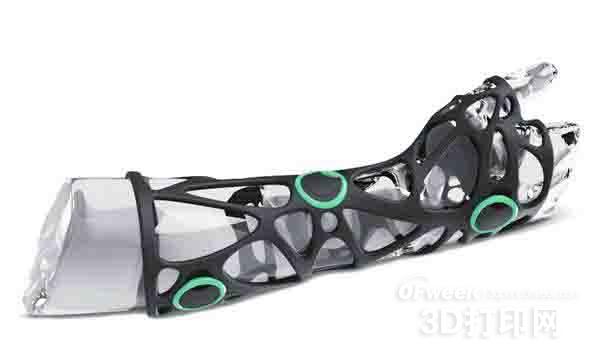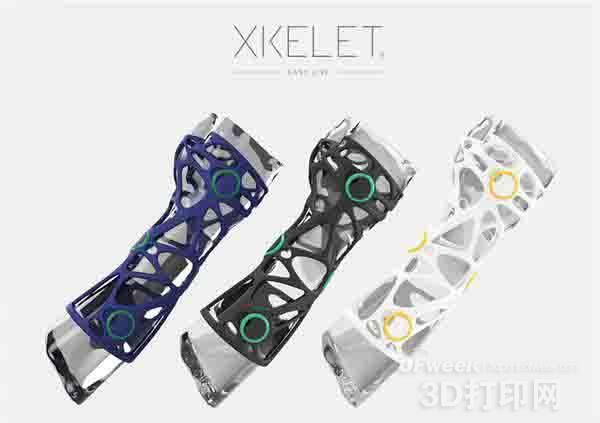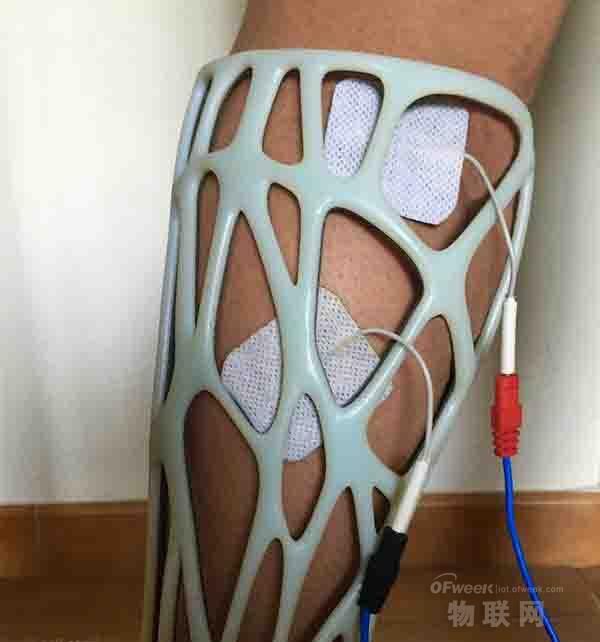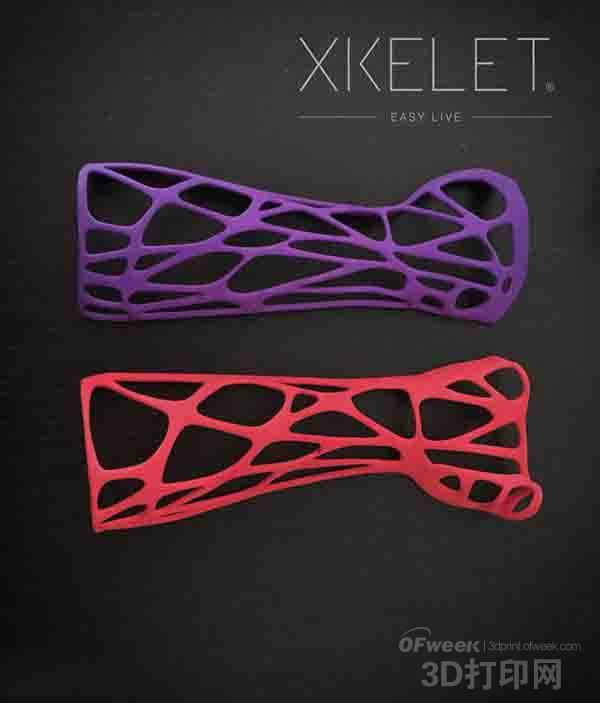3D printing custom orthopedic splint Xkelet won the German red dot design award
Nowadays, we have been able to see 3D printers more and more in some research hospitals. Many doctors use it to 3D print patient's organ models in order to prepare for surgery. However, Xkelet, a startup from Spain, reminds us that 3D printers can also be a perfect tool to help heal. Currently, the company has developed Xkelet orthoses that can be used to replace fixed dressings or plasters commonly used in fracture patients. These traditional dressings tend to cause rickets in patients because they are cumbersome, airtight, and therefore uncomfortable. Xkelet is customized for 3D printing based on the iPad's 3D scan results. It is light, breathable, comfortable, and even bathing. This wonderful concept has also received the attention of the international design community and won the 2016 Red Dot Award. As we all know, the Red Dot Award is one of the most respected design awards in the world. It was founded by Zentrum Nordrhein Westfalen in the 1950s and has more than 17,000 designers participating in the Red Dot Award each year. It is conceivable that Xkelet can not be appreciated by the Red Dot Awards jury, especially since this product has not yet been listed. It is understood that this 3D printed orthosis was developed by Jordi Tura and Ricardo Veiga from Girona, Spain, and later Roberto Sancho and Daniel Oliver also joined. The entrepreneurs said that the reason for their developer's product was that once Tura unfortunately had a broken left leg and cast a plaster, the result was inconvenient to take a bath, which caused his skin to be itchy, his body stinky and uncomfortable. And "When you finally remove the plaster, you will find that the muscles have lost tension and have to recover accordingly," they said. In order to change all of this, they began to find ways to improve their comfort and functionality through 3D printing technology . Fortunately, these entrepreneurs have a lot of experience in industrial design. After four years of development, they finally came up with a great product. In the meantime, the PUSH 2015 accelerator project they participated in also played a certain role. Simply put, Xkelet is a custom-matched orthosis that fixes injured bones and replaces old-fashioned plaster fixation. To ensure a perfect match between the product and the patient, the startup team also developed the XKSS Xkelet 3D Scan App, which runs on the iPad and scans the affected limbs. The collected data is formed into a three-dimensional model and then sent to the online 3D printing service. More importantly, this data can also be saved by the health care provider to get information on how the patient is healed. Once 3D is printed, the Xkelet is easy to use and comfortable and hygienic without affecting the patient's mobility. Of course, Xkelet is not the first company to customize 3D printed orthopedic splints based on 3D scanning, and Osteoid Medical, which we reported two years ago, also launched the same business. But Xkelet's strength lies in its scalability and borrowing from the iPad. Other similar concepts often rely on expensive 3D scanning equipment, which is a serious obstacle to commercialization. For Xkelet, just open the app and take the iPad around the limb for 15 seconds to collect all the necessary data and generate a 3D printed model. Only the 3D printing process may take a little longer. It is reported that the Xkelet splint is printed on an SLS 3D printer using a fully waterproof, hypoallergenic and biocompatible PA2200 plastic. The 3D print service splint now takes about eight hours, but they hope that the manufacturing time will be greatly reduced in the near future. Currently, patients have to wait 4 days to get their custom splints. In addition, these splints are also very light, such as the weight of the splint of the wrist is less than 100 grams. More importantly, Xkelet also has good scalability and adaptability. The same technique can be applied to many parts of the body, as well as to a wide variety of locking systems - for a variety of treatment procedures. Even the grid on the splint can be customized, and of course the user can choose the color.
Over Bed Tables are highly convenient for those who need to spend most of their time lying in bed. Bedside tables are commonly used in hospital rooms to make a situation more convenient by wheeling the table over the mattress for eating, reading or simply to rest anything on a flat surface.
The U and H shaped base allows the table to be remain in place over the bed, even when the user is moving or sleeping. Swivel casters allow the over bed table to be easily transported from room to room. Over Bed Table,Bedside Dining Table,Bedside Medical Table,Air Drive Over Bed Table Jiangmen Jia Mei Medical Products Co.,Ltd. , https://www.jmjiameimedical.com



We supply a range of over bed tables including fixed flat tables, along with split top versions that make reading, drawing and using electronics easier and more comfortable. The height adjustable frame enables the table to be used over a wide variety of beds and chairs. A wipe clean surface and sturdy construction make this ideal for home and facility use.
